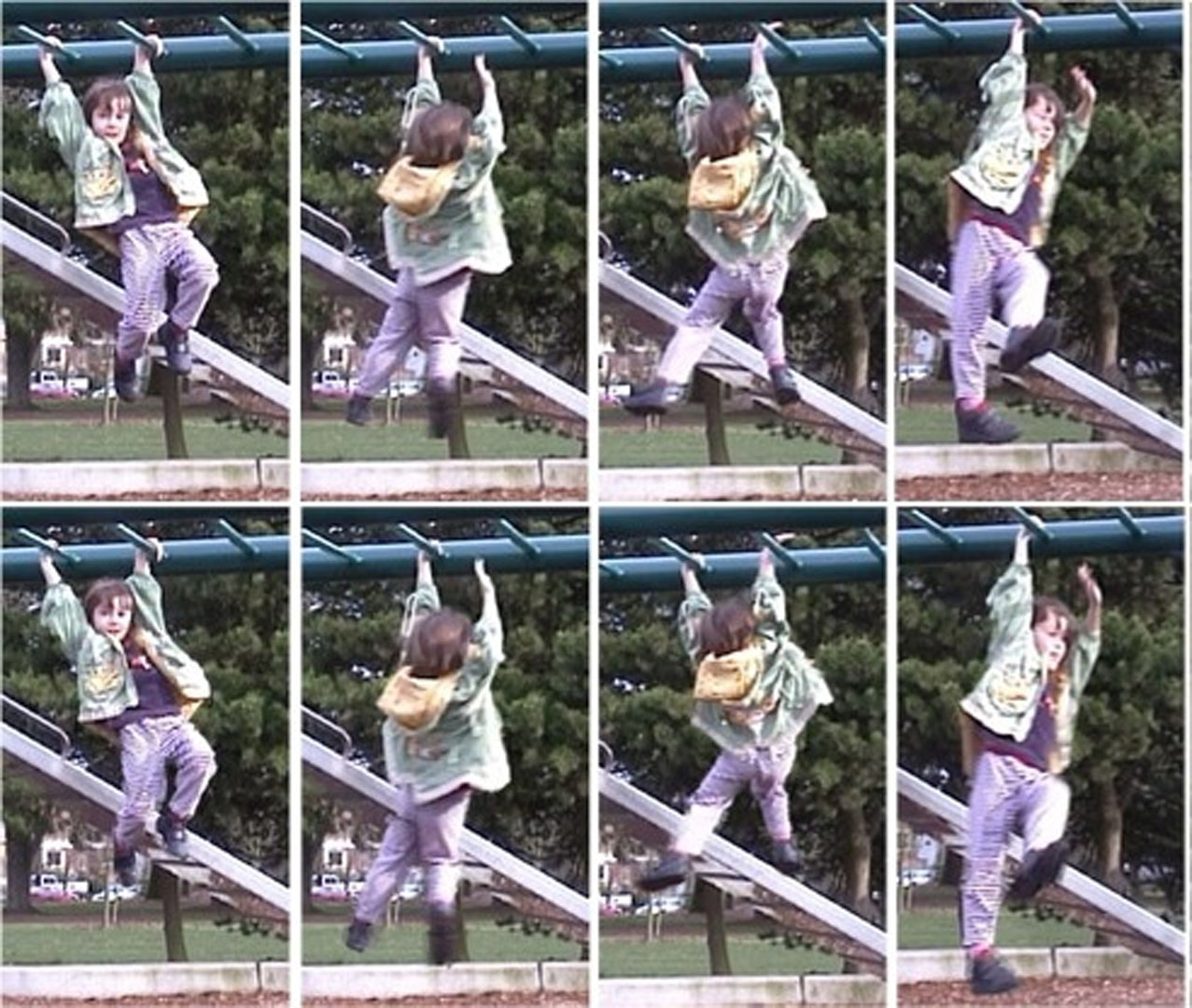“The cartoon animation filter” by Wang, Drucker, Agrawala and Cohen
Conference:
Type(s):
Title:
- The cartoon animation filter
Presenter(s)/Author(s):
Abstract:
We present the “Cartoon Animation Filter”, a simple filter that takes an arbitrary input motion signal and modulates it in such a way that the output motion is more “alive” or “animated”. The filter adds a smoothed, inverted, and (sometimes) time shifted version of the second derivative (the acceleration) of the signal back into the original signal. Almost all parameters of the filter are automated. The user only needs to set the desired strength of the filter. The beauty of the animation filter lies in its simplicity and generality. We apply the filter to motions ranging from hand drawn trajectories, to simple animations within PowerPoint presentations, to motion captured DOF curves, to video segmentation results. Experimental results show that the filtered motion exhibits anticipation, follow-through, exaggeration and squash-and-stretch effects which are not present in the original input motion data.
References:
1. Bruderlin, A., and Williams, L. 1995. Motion signal processing. In Proceedings of SIGGRAPH 95, 97–104. Google ScholarDigital Library
2. Campbell, N., Dalton, C., and Muller, H. 2000. 4d swathing to automatically inject character into animations. In Proceedings of SIGGRAPH Application Sketches 2000, 174–174.Google Scholar
3. Chenney, S., Pingel, M., Iverson, R., and Szymanski, M. 2002. Simulating cartoon style animation. In NPAR 2002: Second International Symposium on Non-Photorealistic Rendering, 133–138. Google ScholarDigital Library
4. Collomosse, J. 2004. Higher Level Techniques for the Artistic Rendering of Images and Video. PhD thesis, University of Bath.Google Scholar
5. Faloutsos, P., van de Panne, M., and Terzopoulos, D. 1997. Dynamic free-form deformations for animation synthesis. IEEE Transactions on Visualization and Computer Graphics 3, 3 (July – September), 201–214. Google ScholarDigital Library
6. Floater, M. S. 2003. Mean value coordinates. Computer Aided Geometric Design 20, 1, 19–27. Google ScholarDigital Library
7. Igarashi, T., Moscovich, T., and Hughes, J. F. 2005. As-rigid-as-possible shape manipulation. ACM Transactions on Graphics 24, 3, 1134–1141. Google ScholarDigital Library
8. Johnston, O., and Thomas, F. 1995. The Illusion of Life: Disney Animation. Disney Editions.Google Scholar
9. Lasseter, J. 1987. Principles of traditional animation applied to 3d computer animation. In Computer Graphics (Proceedings of SIGGRAPH 87), 35–44. Google ScholarDigital Library
10. Liu, C., Torralba, A., Freeman, W. T., Durand, F., and Adelson, E. H. 2005. Motion magnification. In Proceedings of SIGGRAPH 2005, 519–526. Google ScholarDigital Library
11. Shewchuk, J. R. 2002. Delaunay refinement algorithms for triangular mesh generation, computational geometry: Theory and applications. Computational Geometry: Theory and Applications 22, 1–3, 21–74. Google ScholarDigital Library
12. Thorne, M., Burke, D., and van de Panne, M. 2004. Motion doodles: an interface for sketching character motion. ACM Transactions on Graphics 23, 3 (Aug.), 424–431. Google ScholarDigital Library
13. Unuma, M., Anjyo, K., and Takeuchi, R. 1995. Fourier principles for emotion-based human figure animation. In Proceedings of SIGGRAPH 95, 91–96. Google ScholarDigital Library
14. Wang, J., Bhat, P., Colburn, A. R., Agrawala, M., and Cohen, M. F. 2005. Interactive video cutout. In Proceedings of SIGGRAPH 2005, 585–594. Google ScholarDigital Library
15. Wyvill, B. 1997. Animation and Special Effects. Morgan Kaufmann, ch. 8, 242–269.Google Scholar




